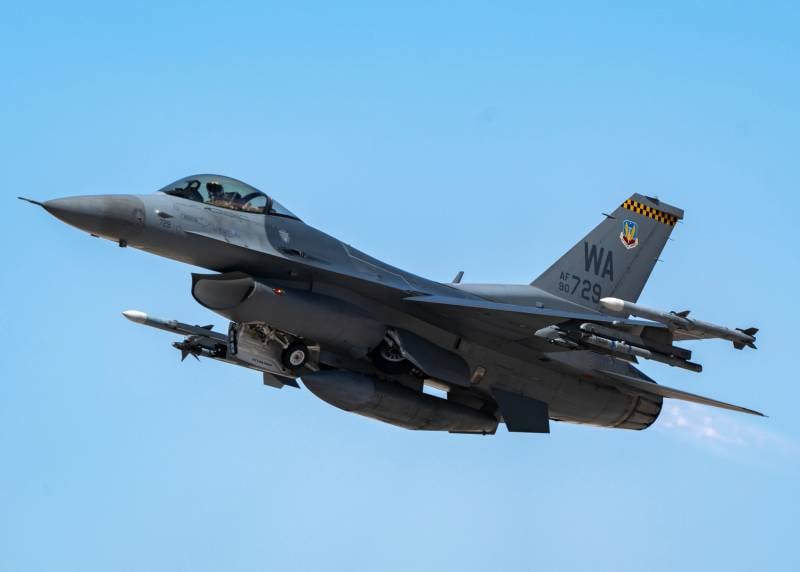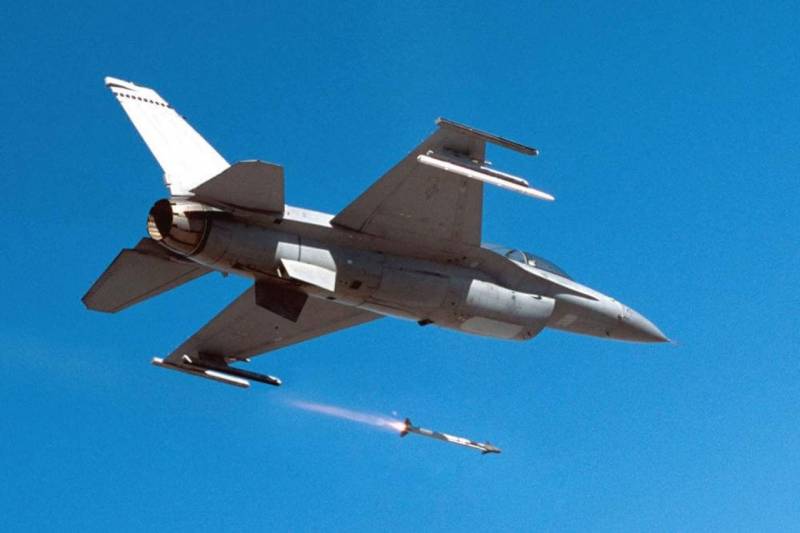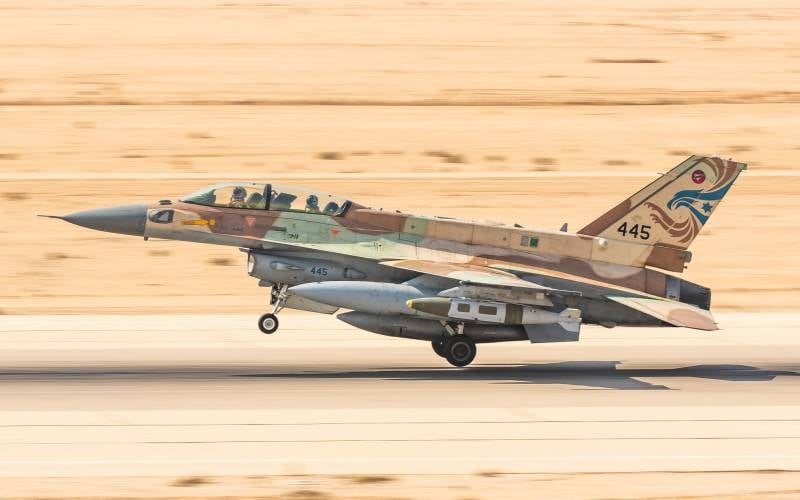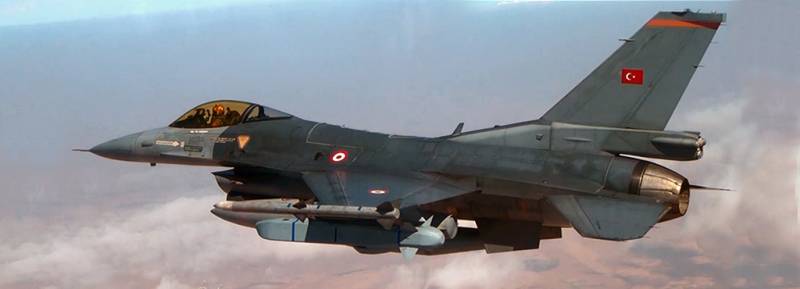Combat use and losses of F-16 Fighting Falcon fighters

Fighter F-16C from the US Air Force. Photo by the US Department of Defense
In the early seventies, the American company General Dynamics developed a promising light fighter F-16 Fighting Falcon. By the end of the decade, he entered service with the US Air Force, and then export deliveries began. For 45 years of service, the Falcons of different countries regularly participated in various military operations and solved combat missions. At the same time, the fighters naturally suffered losses.
Development and records
Recall that the decision to develop the future F-16 was made in the late sixties, taking into account the experience of the Vietnam War. In 1972, within a few months, the US Air Force issued tactical and technical requirements for a new aircraft, received applications from aircraft manufacturers and selected participants in the competition. The winner of this stage in 1975 was the YF-16 project from General Dynamics.
By this time, General Dynamics had managed to build and fly a prototype aircraft of a new type. Tests continued until 1977-78, and in parallel, mass production was being prepared. Soon the deliveries of equipment to the troops began, and in August 1978 the first squadron on the F-16 reached initial operational readiness.
In the future, deliveries of the F-16 to the US Air Force continued, and orders from foreign countries soon arrived. Over the past decades, the Sokol entered service with approx. 25 countries around the world. To date, at least 4,6-4,7 thousand aircraft in various modifications have been built, and most of this equipment remains in service. Thanks to this, the F-16 is currently the most massive aircraft in operation.
First fights
By the beginning of the eighties, Israel received its F-16s, and it was its Air Force that first used such equipment in combat. The F-16 won its first aerial victory in April 1981 over the Bekaa Valley. An Israeli fighter jet using an air-to-air missile tried to hit a Syrian Mi-8 helicopter. The missile missed its target and the Israeli pilot used the cannon. In July of that year, another F-16 shot down an enemy aircraft for the first time.

An F-16 launches an AIM-9X air-to-air missile. Raytheon Photos
In 1981-82. there was another deterioration in the situation in the region, and several air battles took place. The Israeli side reported that its F-16s in total hit more than 40 enemy planes and helicopters in the face of Syria. The Syrian side only partially confirmed these losses. At the same time, they claimed the destruction of five F-16s and several aircraft of other types - although Israel predictably denies this.
The Israeli Air Force subsequently repeatedly used its F-16s and other fighters, but this use had its own characteristics. Thus, the main part of the IDF Air Force operations is carried out against formations that do not pose a threat to aviation. Operations against well-equipped forces, in turn, are planned to minimize risks. As a result, in the XXI century. only non-combat losses of fighters took place.
Pakistani experience
Another recipient of American F-16s in the eighties was the Pakistan Air Force, and in the second half of the decade their combat use began. Until 1989, inclusive, 10 air victories were recorded at the expense of Pakistani fighters - these were mainly combat and transport aircraft of the Afghan Air Force. In April 1987 one F-16 was shot down. The DRA Air Force called it their success, but the Pakistani side spoke of the defeat by friendly fire.
During the 1999 Kargil War, Pakistani F-16s regularly flew patrols and covered the border. There were meetings with Indian aircraft, but everything was limited only to escorting and irradiating the radar. There were no fights or losses.
During the next deterioration of the Indian-Pakistani relations in 2019, it came to air battles. The Pakistani side announced the defeat of several enemy aircraft; all successes were credited to the F-16. India initially denied this information, but then confirmed the loss of one aircraft of the old model. At the same time, one Pakistani Fighting Falcon was declared defeated.
In the US Air Force
The US Air Force, the first to receive F-16 aircraft, did not use them in combat for the first time until 1991, during operations in the Middle East. So, during Desert Storm, light F-16s were used only as fighter-bombers. The fight for the air was entrusted to the F-15 aircraft. The 250 involved Sokolovs completed more than 13 sorties and destroyed a large number of ground targets or provided target designation with another strike tool.

Israeli F-16I. Photo by AOI
The F-16 did not enter into air battles, and did not have victories. At the same time, they suffered minor losses. According to official data, the Iraqi army's air defense systems and MANPADS shot down three American F-16s. Four more were able to return to base, but were written off due to damage.
Later, F-16s from the US Air Force participated in securing a no-fly zone over Iraq. In December 1992, the American F-16 scored its first aerial victory - an Iraqi MiG-25 was shot down. A few weeks later they hit the MiG-23.
During the 2003 intervention, F-16 fighter-bombers were again used only in the strike role. This time it was possible to do without significant losses. During the main battles, only one aircraft was lost, and for technical reasons. Three more fighters crashed in 2006-2008. due to pilot error or technical reasons.
Fighters over the Balkans
F-16s from several countries at once participated in the hostilities in the territories of the disintegrating Yugoslavia. This theater was mainly operated by US aircraft. The air forces of Belgium, Denmark, the Netherlands, Norway and Turkey were also involved. At various times, the Fighting Falcon was used both for patrolling and combating air targets, and for attacking ground targets. At the same time, air battles took place quite rarely - due to the organization of a no-fly zone and the destruction of enemy aircraft on the ground.
The first air battle took place over Bosnia and Herzegovina in February 1994. Two pairs of American F-16s spotted six Yugoslav attack aircraft and shot down four. The next air victory took place only in 1999 - a pair of US Air Force F-16s engaged Yugoslav MiG-29s.
During operations in the Balkans, the United States lost several F-16s. The first in June 1995 shot down the Yugoslav Kvadrat air defense system. Three more aircraft were written off during that period due to damage or technical problems. In May 1999, another Sokol was lost, this time due to the impact of the S-125 air defense system. At the same time, the Yugoslav side spoke of a greater number of downed aircraft, although it could not confirm all the applications.

Turkish Air Force F-16 with Turkish-designed weapons. Roketsan Photos
F-16s from other countries also participated in the intervention, but did not show much success in air combat. They were mainly used as bombers, which did not contribute to the increase in combat scores. Only one pilot of the Netherlands Air Force on the F-16 in 1999 managed to shoot down the Yugoslav MiG-29.
Local conflicts
In the 16s and XNUMXs, F-XNUMXs from various countries were actively used in various low-intensity conflicts that took place in the Middle East and North Africa. All these operations are united by a small number of air battles, as well as minimal threats from enemy air defenses. Such factors limit the possible number of air victories, but at the same time reduce the risks for aircraft and their pilots.
In 2011, a number of foreign states participated in the intervention in Libya, and some of them involved F-16 fighters. Fighting Falcons from the Air Forces of Belgium, Denmark, the Netherlands, Norway, the United Arab Emirates and the United States participated in securing the no-fly zone and carried out air-to-surface strikes. At the same time, there were no air battles, victories and losses.
Another "international coalition" soon intervened in the war in Syria on the side of opponents of the legitimate government. A few years later, the same countries began to support Iraq in the fight against the newly emerged major terrorist organization. Again, it was mainly about strikes against ground targets with a minimum number of air battles.
Türkiye most actively used its fighters in the original role. To date, 5-7 aircraft and helicopters of the Syrian Air Force have been reported hit by Turkish F-16s. In particular, it was a pair of Sokolovs that shot down a Russian Su-2015 bomber in November 24. According to various sources, from 2013-14. at least 2-3 Turkish F-16s were shot down by fire from the ground or received damage incompatible with further operation.
Another group of states has been participating in the civil war in Yemen since 2015, supporting one of the parties. F-16 fighters from Bahrain, Jordan, Morocco and the United Arab Emirates take part in this conflict. Due to the lack of aviation among the Houthis, coalition aircraft operate only in a strike role. In 2015-17 the Moroccan and Jordanian air forces lost at least two aircraft.
Mixed experience
The General Dynamics F-16 Fighting Falcon light multirole fighter was developed almost half a century ago and has been in service for 45 years. If necessary, various upgrades are carried out aimed at the growth of certain characteristics and capabilities. During the operation, the F-16s were repeatedly and actively used in real military operations and clearly demonstrated their combat potential.
In general, practice has shown that the F-16s of all modifications are quite capable of solving the assigned combat missions - to patrol, search for and hit air targets or attack ground targets. At the same time, certain successes are achieved and the combat score is growing. At the same time, the Falcon is not invulnerable. In real conflicts, such aircraft were even hit by obsolete air defense systems. There were no losses only in situations where the enemy did not have sufficient air defense.
Obviously, the meeting of the F-16 even with the latest modifications with modern anti-aircraft systems and / or fighters will be associated with even greater risks. It is for this reason that a few decades ago, the US Air Force decided to develop a new generation of fighter aircraft to replace the F-16 in the future. Such rearmament has already begun and is successfully moving forward.
Meanwhile, some foreign countries and regimes still tend to overestimate the rather old F-16. Despite the objective obsolescence, he is considered a kind of miracleweaponsthat could turn the tide of modern conflict. How long they will maintain such illusions is unknown. But measures are already being taken, the result of which may be another test of American fighters in practice - and the possible collapse of the hopes placed on them.
Information